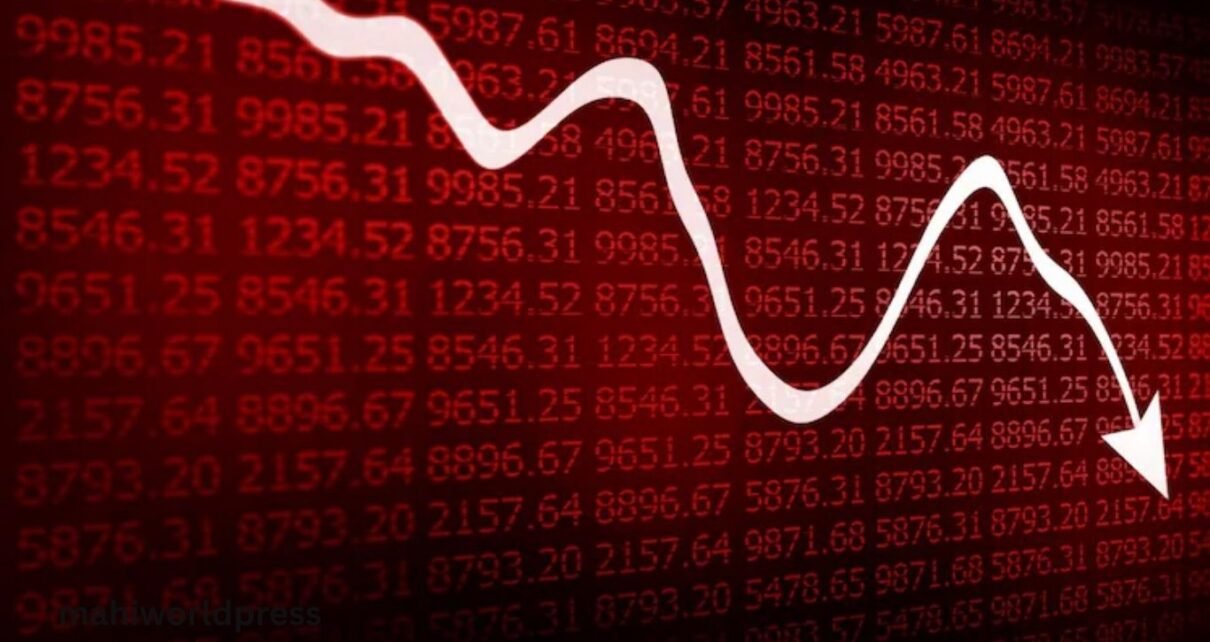In early August 2025, global stock markets plunged amid two simultaneous economic shocks: disappointing U.S. job data and sweeping new tariffs introduced by former U.S. President Donald Trump. This one-two punch sent investors scrambling for safe havens, pulling money out of equities and exposing vulnerabilities in the global economy.
Weak U.S. Jobs Report Signals Slowing Economy
Jobs Data Misses Expectations
The July 2025 jobs report revealed that the U.S. economy added just 73,000 new jobs, significantly lower than the expected figure of over 100,000. Compounding the issue were downward revisions to May and June employment figures, cutting an additional 258,000 jobs from previous estimates.
Rising Unemployment
The unemployment rate ticked up to 4.2%, a slight but psychologically significant increase. This marks the highest level in 12 months and highlights weakening labor market momentum. Average hourly earnings increased by about 3.9% year-over-year, modestly above inflation but not enough to offset consumer concerns.
Key Takeaway
The slowdown in hiring, especially in manufacturing and government sectors, suggests the economy may be entering a period of stagnation. Investors fear that without stronger job growth, consumer spending—the backbone of the U.S. economy—may falter.
Trump’s New Tariffs Jolt Global Trade System
Sweeping Trade Measures
In a surprise move, former President Donald Trump unveiled a massive expansion of tariffs. The new measures affected over 60 countries, with rates ranging between 10% and 50%. The average tariff rate across impacted nations jumped to 18%, marking the highest U.S. tariff rate in nearly 100 years.
Countries Affected
- Canada: Tariffs up to 35% on non-NAFTA goods.
- India, Taiwan, Switzerland: Swept into the general trade category, with limited exceptions.
- Mexico: Granted a 90-day grace period before full tariffs are imposed.
Global Response
Foreign governments voiced concern and began exploring retaliation or negotiations. China and some European nations hinted at imposing reciprocal tariffs, escalating fears of a broader trade war.
Market Reaction: Equities, Bonds, and Commodities
The combination of weak jobs data and aggressive trade measures triggered a rapid market selloff across global exchanges.
U.S. Stock Markets
- Dow Jones Industrial Average fell by over 600 points, a loss of approximately 1.2%.
- S&P 500 dropped around 1.5%, with broad sector declines.
- NASDAQ Composite slid more than 2%, led by tech and export-sensitive stocks.
- Volatility Index (VIX) spiked to a six-week high, signaling investor fear.
Global Equity Markets
- European markets (FTSE, CAC 40, DAX) each declined between 1.5% and 2.1%.
- Asian markets fared worse in some regions, particularly:
- Hang Seng Index: Fell over 13%, its worst day in decades.
- Taiwan’s TAIEX: Dropped up to 10%.
- Nikkei 225 (Japan): Down nearly 3%.
Bonds and Commodities
- 10-Year U.S. Treasury Yields fell as investors fled to safety, indicating lower economic growth expectations.
- Gold prices surged above $3,100/oz, reaching an all-time high amid economic uncertainty.
- The U.S. Dollar weakened against major currencies as interest rate cut expectations rose.
Summary Table: Key Metrics
Here’s a quick snapshot of the most significant market indicators:
| Metric | Previous Data | Current Reported Value | Market Impact |
|---|---|---|---|
| U.S. Jobs Added (July) | ~100,000 (expected) | 73,000 | Disappointed forecasts |
| Unemployment Rate | 4.1% | 4.2% | Suggests economic softening |
| Average Hourly Earnings YoY | 3.7% | 3.9% | Slight inflationary pressure |
| New Tariff Average Rate | ~3% | ~18% | Highest since 1930s |
| Dow Jones | +0.2% (prior trend) | -1.2% (~600 points drop) | Broad selloff |
| S&P 500 | +0.3% | -1.5% | Negative sentiment |
| NASDAQ | +0.5% | -2.1% | Tech-led losses |
| Gold Price | ~$2,900/oz | ~$3,100/oz | Inflation hedge buying |
| 10-Year Treasury Yield | ~4.2% | ~4.05% | Safe-haven demand |
Analysts’ Views and Economic Implications
Rising Recession Fears
Economists are now placing the probability of a recession in the next 6–9 months at 45–60%. The jobs data confirms that businesses are pulling back on hiring, possibly due to trade uncertainty and elevated input costs.
Tariffs and Inflation
The tariff hikes may worsen inflation in the short term, especially on imported goods like electronics, consumer staples, and automotive parts. This creates a dilemma for the Federal Reserve: Should it cut interest rates to stimulate growth or hold steady to contain inflation?
Corporate Earnings at Risk
Many firms have already revised downward their earnings forecasts, especially in sectors like:
- Retail
- Automotive
- Technology
- Manufacturing
Multinational companies that depend on global supply chains may face rising input costs and shrinking margins
Political Fallout
Partisan Divide
The tariffs have ignited heated political debate. While Trump supporters argue that tariffs protect American jobs, critics claim the measures will:
- Increase consumer prices
- Disrupt international relations
- Dampen business investment
There is growing pressure on both parties to define clear positions on trade ahead of the 2026 midterm elections.
Federal Reserve Dilemma
The Fed is now caught between weak employment signals and inflationary risks. Investors are split on whether the central bank will begin cutting interest rates again, which could stimulate borrowing but may not fix supply-side trade issues.
Strategic Considerations for Investors
With markets in flux, investors need to revisit their portfolios and consider:
A. Diversification
Ensure assets are spread across various sectors and geographies. Exposure to emerging markets or U.S.-focused businesses may help limit downside.
B. Safe-Haven Allocations
Adding exposure to U.S. Treasuries, gold, and defensive sectors (e.g., healthcare, utilities) may provide stability during periods of volatility.
C. Watch the Fed
Pay attention to Federal Reserve guidance. A dovish pivot could re-ignite stock market confidence, especially in rate-sensitive sectors like real estate and tech.
D. Short-Term Risks
Be prepared for continued volatility, especially as more countries announce their responses to the tariffs and as economic data continues to roll in.
What Comes Next?
A. Upcoming Economic Data
Investors will be closely watching:
- August Jobs Report
- Retail Sales and Industrial Output
- Inflation Data (CPI/PPI)
- Corporate Earnings from major sectors
B. Global Diplomacy and Trade Talks
There is potential for diplomacy to reverse or reduce some tariffs, especially if pressure mounts from corporate lobbyists or foreign governments.
C. U.S. Political Landscape
As the 2026 election cycle intensifies, economic issues are likely to dominate the agenda. Expect more policy announcements on trade, taxation, and job growth.
Conclusion
The recent market drop underscores how sensitive global financial systems are to economic data and policy shifts. Weak employment growth combined with aggressive tariff policies has sent shockwaves through equities, bonds, and commodities. While it’s too early to predict a full-blown recession, the risks have clearly increased.
For investors, the key is to stay informed, remain diversified, and focus on long-term objectives. Despite near-term volatility, markets have historically recovered from geopolitical and economic turbulence—albeit not without pain.



